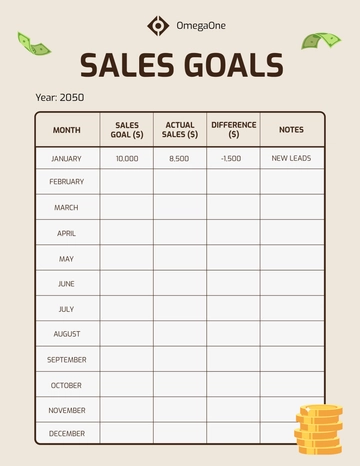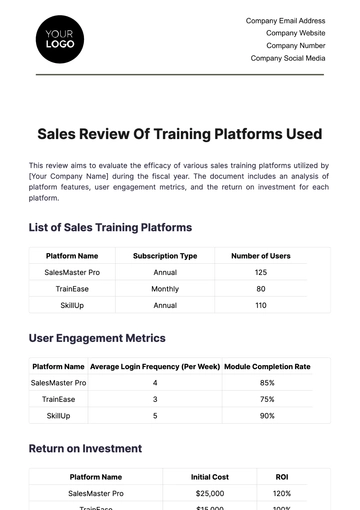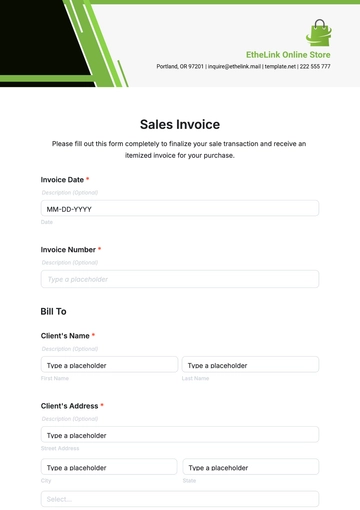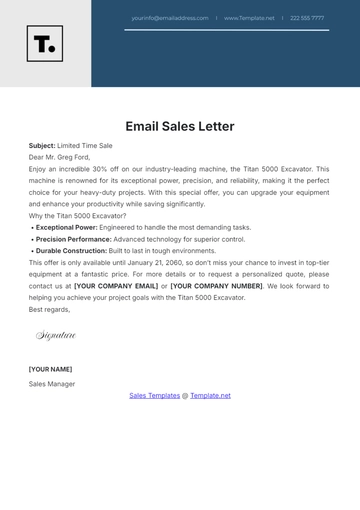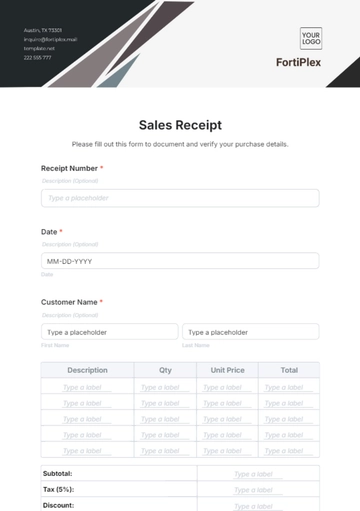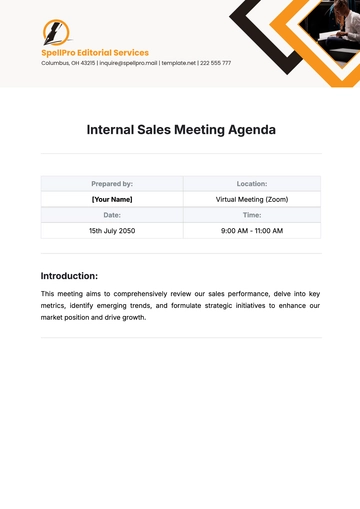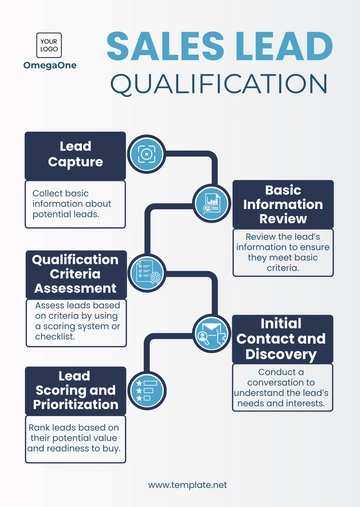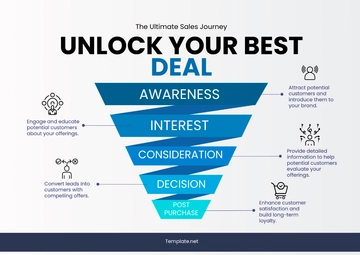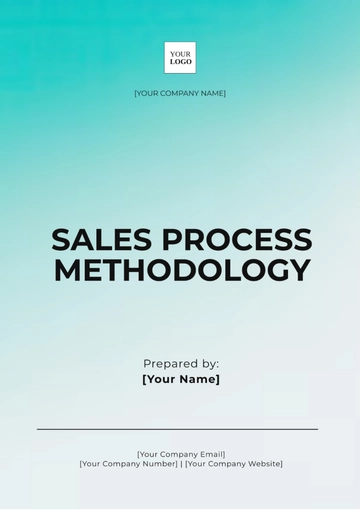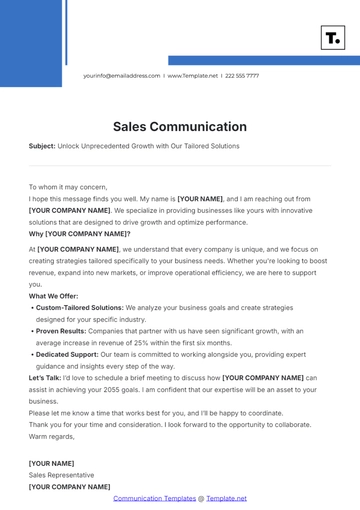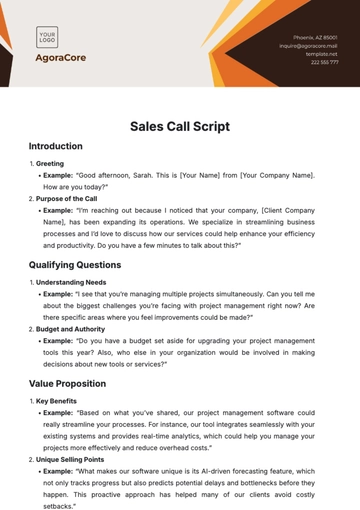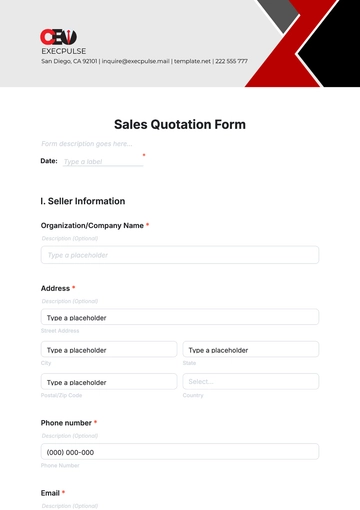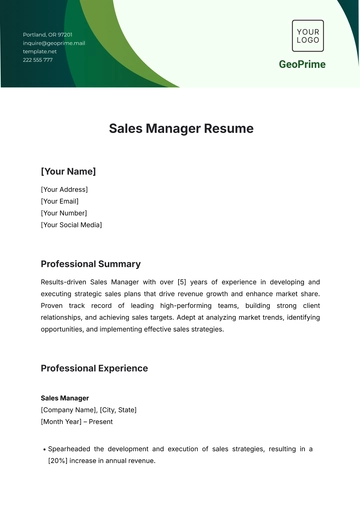Free Sales Onboarding Best Practices Document
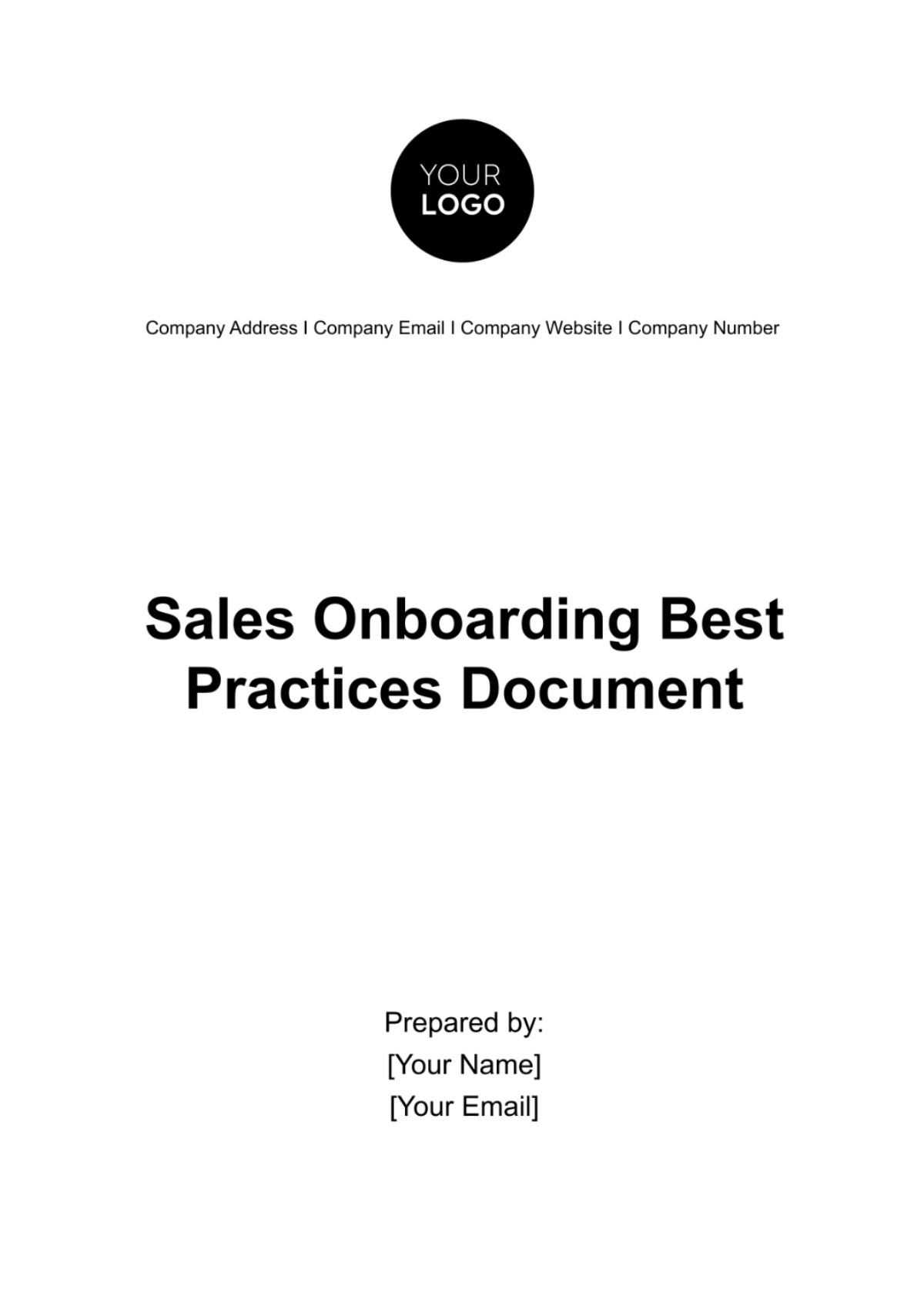
I. Introduction
A. Purpose
The purpose of this document is to outline the best practices for onboarding new sales team members effectively. By following these guidelines, [Your Company Name] aims to streamline the onboarding process, equip new hires with the necessary skills and knowledge, and ultimately maximize their success in driving sales.
B. Scope
This document covers the entire sales onboarding process at [Your Company Name], from pre-boarding preparations to ongoing training and support. It applies to all new sales team members, including entry-level sales representatives, account executives, and sales managers.
II. Pre-Boarding Preparation
A. Define Expectations
Role Definition:
Clearly define the role of a sales team member at [Your Company Name], including responsibilities, key performance indicators (KPIs), and expectations for success.
Example:
Role: Sales Representative
Responsibilities:
- Prospect and qualify leads
- Conduct product demonstrations
- Negotiate contracts and close deals
Key Performance Indicators (KPIs):
- Monthly sales targets achieved
- Customer satisfaction ratings
Expectations for Success:
- Consistently meet or exceed sales quotas
- Demonstrate strong communication and negotiation skills
Performance Expectations:
Clearly communicate performance expectations to new hires, including quantitative goals and qualitative standards.
Example:
Performance Expectations:
- Achieve [80%] of monthly sales targets
- Maintain a [90%] customer satisfaction rating
- Submit weekly sales activity reports
- Participate in [80%] of scheduled training sessions
B. Technology Setup
Software and Tools:
Ensure new hires have access to and are proficient in using all necessary software and tools required for their role, including:
Customer Relationship Management (CRM) software
Email and communication platforms
Sales presentation and demo tools
Example:
Software and Tools
Description
CRM Software
Salesforce
Email Platform
Outlook
Presentation Tools
PowerPoint, Prezi
Access Permissions:
Grant appropriate access permissions to new hires for all relevant systems and platforms, ensuring they have the necessary privileges to perform their job functions.
Example:
System / Platform
Access Permissions
Salesforce
Sales Representative role with access to leads, accounts, and opportunities
Outlook
Full email and calendar access
Sales Presentation Tools
Create and edit presentations
C. Mentor Assignment
Mentor Selection:
Assign experienced and successful sales professionals as mentors to new hires.
Consider mentors who have demonstrated leadership skills, a strong understanding of company culture, and a commitment to employee development.
Mentor Training:
Mentor Responsibilities:
Clearly outline the responsibilities of mentors, including:
Providing guidance and support to new hires during their onboarding period.
Sharing knowledge and best practices related to sales processes and techniques.
Facilitating introductions to key stakeholders and resources within the company.
III. Onboarding Training
A. Product and Industry Knowledge
Product Training:
Provide comprehensive training on [Your Company Name] products and services to new sales team members.
Training should cover product features, benefits, use cases, and competitive advantages.
Example:
Product Training Modules
Module 1: Product Overview
- Introduction to [Your Company Name] product suite
- Key features and functionalities
Module 2: Use Cases
- Real-world scenarios demonstrating product usage
- Case studies highlighting successful customer implementations
Module 3: Competitive Analysis
- Comparison with competitors' offerings
- Positioning strategies to differentiate Acme Sales Solutions' products
Industry Knowledge:
Educate new hires about the industry landscape, market trends, and challenges.
Provide insights into target market segments, customer profiles, and buying behaviors.
Example:
Industry Knowledge Sessions
Session 1: Industry Overview
- Introduction to the [Industry] industry
- Market size and growth projections
Session 2: Market Trends
- Emerging trends and innovations in the [Industry] industry
- Implications for sales strategies
Session 3: Customer Profiles
- Analysis of typical customer personas
- Understanding customer pain points and motivations
B. Sales Process Training
Sales Methodology:
Teach new hires the sales methodology adopted by [Your Company Name], focusing on a structured approach to prospecting, qualifying leads, and closing deals.
Example:
Sales Methodology Training
Module 1: Prospecting
- Techniques for identifying and prioritizing potential leads
- Utilizing CRM tools for lead management
Module 2: Qualification
- Qualifying leads based on needs, budget, and timeline
- Conducting effective discovery calls and needs assessments
Module 3: Closing
- Strategies for overcoming objections and addressing concerns
- Negotiation tactics and closing techniques
Role-Play Exercises:
Facilitate role-play exercises to allow new hires to practice sales interactions in a simulated environment.
Provide feedback and coaching to help improve their sales skills and confidence.
Example:
Role-Play Scenarios
Scenario 1: Cold Calling
- New hires simulate cold calls to prospects
- Mentors provide feedback on communication style and objection handling
Scenario 2: Product Demo
- New hires conduct mock product demonstrations
- Peers evaluate presentation effectiveness and engagement
C. Tool Familiarization
Offer hands-on training sessions for all sales tools and software platforms.
Provide access to user guides and tutorials for self-paced learning.
IV. Shadowing and Role Immersion
A. Shadowing Opportunities
Schedule shadowing sessions with experienced sales reps to observe real-world sales interactions.
Encourage active participation and note-taking during shadowing sessions.
B. Role Immersion Activities
Assign simulated sales scenarios to help new hires apply theoretical knowledge in practical situations.
Provide feedback and coaching based on performance in role immersion activities.
V. Ongoing Support and Development
A. Regular Check-ins
Frequency:
Conduct bi-weekly check-in meetings between new hires and their managers to assess progress and address any challenges.
Encourage open communication and feedback during these sessions.
Example:
Check-in Schedule
Week 1: Orientation and Goal Setting
Week 2: Progress Review and Feedback
Week 3: Training Needs Assessment
Week 4: Mid-point Check-in
Week 5: Performance Review and Goal Adjustment
Week 6: Final Evaluation and Next Steps
Agenda:
Use a structured agenda for check-in meetings to ensure all relevant topics are covered.
Agenda items may include progress updates, challenges faced, training needs, and goal alignment.
Example:
Check-in Agenda
1. Review of Goals
2. Progress Update
3. Challenges and Roadblocks
4. Training and Development Needs
5. Action Items and Next Steps
B. Continuous Training
Offer ongoing training opportunities:
Provide access to online courses, workshops, and seminars relevant to sales skills, industry trends, and product knowledge.
Encourage participation in internal training sessions conducted by subject matter experts and senior sales professionals.
Example:
Ongoing Training Opportunities
1. Online Sales Certification Programs
2. Weekly Sales Skills Workshops
3. Quarterly Industry Updates Webinars
External Resources:
Curate a list of external resources such as books, podcasts, and industry publications to support continuous learning and professional development.
Encourage new hires to explore these resources to gain diverse perspectives and insights.
Example:
Recommended External Resources
1. Book: "SPIN Selling" by Neil Rackham
2. Podcast: "The Sales Evangelist" by Donald C. Kelly
3. Industry Publication: [Your Industry Association] Magazine
C. Performance Reviews
Metrics and KPIs:
Define key performance indicators (KPIs) relevant to the sales role, such as sales revenue, conversion rates, and customer satisfaction scores.
Regularly track and review performance against these metrics to identify areas of strength and improvement.
Example:
Key Performance Indicators (KPIs)
1. Monthly Sales Revenue
2. Conversion Rate (Leads to Deals)
3. Customer Satisfaction Score
Feedback and Coaching:
Provide timely and constructive feedback to new hires based on their performance in sales activities and interactions.
Offer coaching and mentorship to help individuals develop specific skills and overcome challenges.
Example:
Feedback and Coaching Sessions
1. Monthly Performance Reviews
2. Bi-weekly Coaching Calls with Managers
3. Peer Feedback Sessions
VI. Conclusion
A. Continuous Improvement
Feedback Mechanisms:
Implement feedback mechanisms, such as surveys and focus groups, to gather input from new hires and stakeholders about the effectiveness of the onboarding program.
Use feedback to identify areas for improvement and make necessary adjustments to the onboarding process.
Example:
Feedback Mechanisms
1. Post-Onboarding Survey
2. Monthly Feedback Meetings with New Hires
3. Quarterly Stakeholder Review Meetings
Iterative Approach:
Embrace an iterative approach to onboarding, where the process is continuously refined and optimized based on feedback and performance data.
Strive for agility and flexibility in adapting to changing business needs and evolving market dynamics.
Example:
Iterative Approach
1. Quarterly Review and Update of Onboarding Curriculum
2. Agile Implementation of New Training Techniques and Tools
3. Regular Communication Channels for Feedback and Suggestions
B. Contact Information
For any questions or further assistance regarding the sales onboarding process, please contact:
[Your Name]
[Your Position]
[Your Company Name]
[Your Email]
[Your Number]
C. Revision History
Version | Date | Author | Description |
|---|---|---|---|
1.0 | [Date] | [Your Name] | Initial Draft |
1.1 | [Date] | [Your Name] | Incorporated Feedback |
1.2 | [Date] | [Your Name] | Final Version for Approval |
- 100% Customizable, free editor
- Access 1 Million+ Templates, photo’s & graphics
- Download or share as a template
- Click and replace photos, graphics, text, backgrounds
- Resize, crop, AI write & more
- Access advanced editor
Optimize your onboarding process with our Sales Onboarding Best Practices Document Template from Template.net. This editable and customizable template provides a comprehensive guide to implementing effective onboarding strategies. Tailor it to your company's unique needs using our Ai Editor Tool for seamless integration. Streamline your onboarding process and set your sales team up for success.





